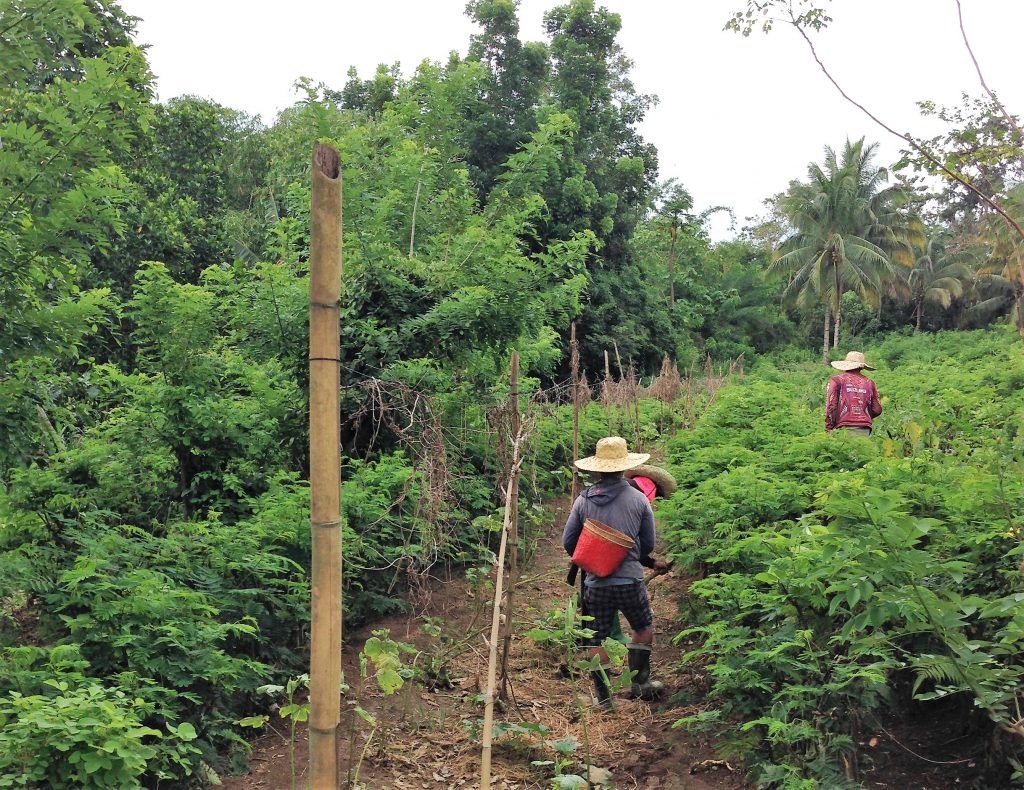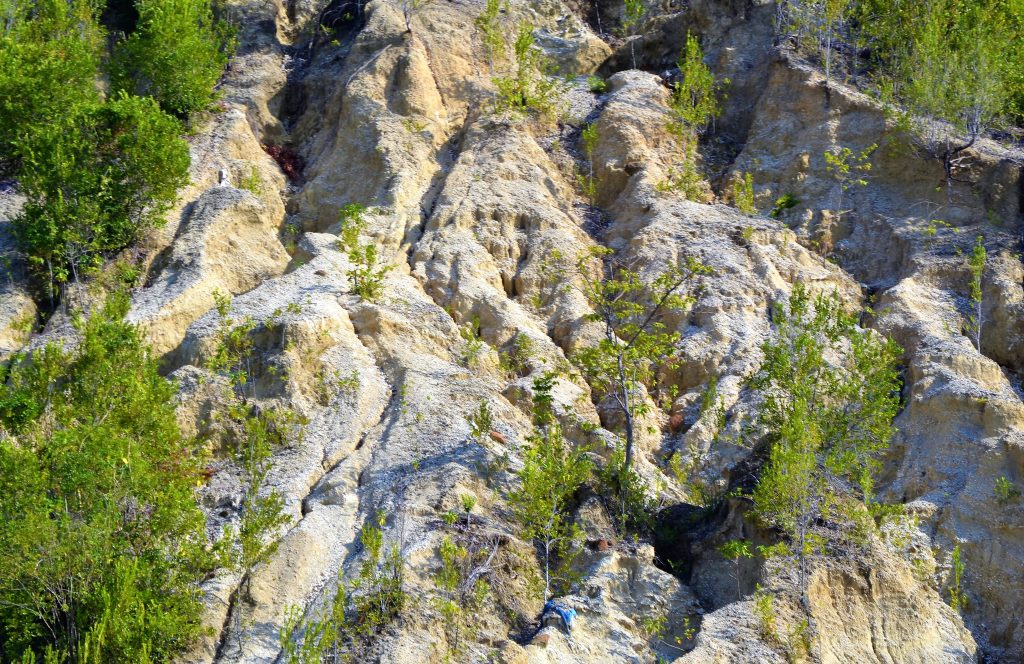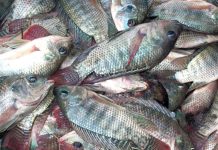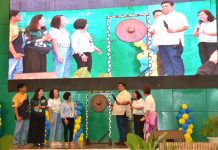“By planting more crops in one area, farmers can rely on several streams of income and food sources. If one kind of crops gets damaged by a strong typhoon, then farmers practicing CAT will still have other crops to fall back on and sell.”
That is how Agustin R. Mercado, Jr., Rodel D. Lasco, and Manuel R. Reyes describe one of the advantages of CAT or conservation agriculture with trees. The three authors discussed the result of the study that was featured in the book, Learning and Coping with Change: Case Stories of Climate Change Adaptation in Southeast Asia.
“The CAT strategy is the best ‘tool box’ for sustainable crop production intensification,” the three authors wrote. Both Mercado and Lasco were with the World Agroforestry Center while Reyes was connected with the North Carolina Agricultural and Technical State University when the study was conducted.

CAT follows the so-called “landcare approach,” whose principles and practices are founded on minimal soil disturbances, continuous mulching, pests and nutrients management, species rotations, integration of trees, and rainwater harvesting.
The study, conducted in Claveria, Misamis Oriental (about 42 kilometers northeast of Cagayan de Oro City), showed how the interplanting of corn with cowpea and then relayed with upland rice has ensured the food and nutritional security and has improved the incomes of smallholder upland farmers in the municipality.
The study has also shown that it could be one of the possible solutions to the global problem of climate change, a pervasive concern of the current as well as the future generation.
“Climate change threatens the very survival of what life stands for, including that of human species,” wrote Dr. Percy E. Sajise, of the editors of the 265-page book published by the Southeast Asia Regional Center for Agriculture (SEARCA).
Currently, the international community is addressing the climate change problem in two fronts: through reducing greenhouse gas emissions and through other forms of mitigation and adaptation.
“For small farm holders who have less production resources and options for livelihoods, the only available and affordable option for them to deal with this challenge is to adapt to climate change,” Dr. Sajise pointed out.
CAT is specifically launched to help Filipino upland farmers. In the Philippine context, the uplands are rolling to steep lands, with slopes ranging upward from 18%, according to the Department of Environment and Natural Resources. About 60% of the country’s 30 million hectares are considered uplands, where most of the forest cover is located.
“The (upland) inhabitants are primarily farming families in dire poverty and insecurity,” said a commissioned-study that was featured in the book, Agricultural Sustainability and the Environment in the Humid Tropics. “Subsistence food production, rather than forestry, is their overriding priority.”
When trees are cut, soil erosion happens. The Bureau of Soils and Water Management said that 75% or 22.88 million hectares of the country’s land suffers slight to severe soil erosion. Annual soil loss is up to 80.6 million metric tons, the environment department reported.
Mercado, Lasco and Reyes knew this along the way. “The resource-poor upland farmers are highly vulnerable to the impacts of climate change, and their miseries are exacerbated due to erratic rainfall patterns, more frequent occurrence of extreme weather events, and other resource-degrading events that always stretch their carrying capacities,” the three authors wrote.
The three researchers observed that upland farmers, who are typically smallholders, practice diverse integrated production systems. “They are primarily interested in adopting systems that cater to their interests of diversification as a risk-aversion mechanism and a way to ensure house hold food and money,” the authors noted.
CAT, a promising option for these farmers, was first piloted in a Claveria upland with an elevation of 350-950 meters above sea level. Soil was identified as acid upland. A majority of the land is rolling and very steep, with soil erosion consequently accounted to be at 200-350 megagram per hectare.

Actually, CAT is the integration of trees into annual food crop systems by employing various conservation measures like minimal soil disturbance, planting diverse crop species, continuous ground cover, judicious integration of trees, and integrated water, nutrient, and pest management.
CAT has been touted as “environment-friendly” as “it fosters a more diverse ecosystem that has little reliance on external inputs like expensive fertilizers.” More importantly, the scheme attracts different forms of wildlife that cannot be found in monoculture plantations.
One example of CAT’s annual system is the growing of corn with cowpea intercropped with banana and rubber trees and forages. “The combination of rubber trees, bananas and forages as contour hedgerows provide soil binding and anchorage that reduces – if not eliminate soil erosion and landslides during extreme rainfall events,” the three authors wrote.
Another is the perennial system where perennial trees like rubber are intercropped with cacao and cover crops during the first two-three years before tree canopy closes, enabling sunlight to grow food crops.
“Rubber trees in cacao production will improve cacao’s productivity; cacao requires shade, which the rubber trees can according provide,” the three authors wrote. “Meanwhile, the cover crop fixes nitrogen from the air, which complements the fertilizer requirement of cacao and rubber trees.”
One good thing about CAT: farmers were able to identify a cost-effective method of creating rainwater-harvesting system through animal-built embankment. By collecting rainwater, the farmers were able to have additional income as “it allows them to culture fish, frogs and ducks.”
To address the fertilizer requirements for their crops, farmers employed vermicomposting – using earthworms to produce organic fertilizer. “Using organic fertilizers increases soil organic matter, which improves soil structure and soil moisture holding capacity,” the authors wrote. “Water then becomes available to crops during dry spells, thus making a suitable growing environment for crops.”

Most importantly, the system helped mitigate climate change as the practice of using organic fertilizer “prevents carbon dioxide emission through fertilizer substitution” and “from injection of carbon into the soil that enhances its sequestration. “This low-cost technology has the potential for mass participation of smallholders to climate change mitigation,” the authors explained.
The study also found that integrating properly managed trees into an intensive vegetable gardening production system can improve vegetable yields up to 40%. “This is because trees provide desirable microclimate for vegetable production as they reduce wind speed and temperature, increase relative humidity, provide high soil moisture, and improve soil organic matter content,” the authors pointed out.
After the Claveria pilot work, some 10,000 farmers in Mindanao have adopted the CAT scheme. “Farmers now enjoy many income streams and food sources,” the study said, adding that trees serve as insurance against climate change.






